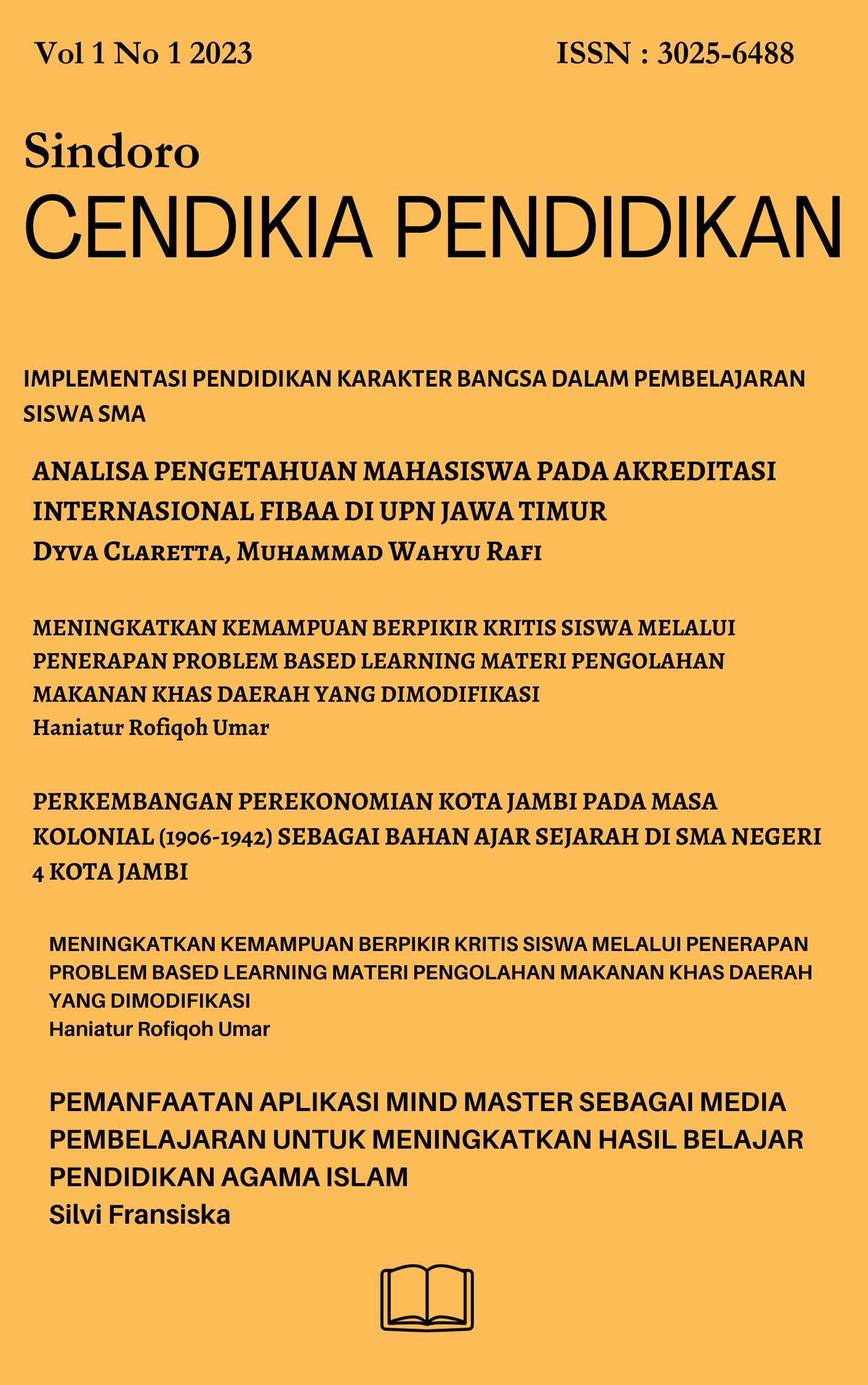ANALISIS KELAYAKAN BUKU TEKS BINA AQIDAH AKHLAK KELAS 5 SEKOLAH DASAR/MADRASAH IBTIDAIYAH
Main Article Content
Abstract
This study aims to analyze the feasibility of the “Bina Aqidah Akhlak” textbook for grade V elementary/madrasah Ibtidaiyah schools. Using the literature study method, this research evaluates four main aspects: content, presentation, language, and graphics according to the provisions of the National Education Standards Agency. The results showed that the book met the eligibility criteria with a total score of 89.7, indicating a “Highly Appropriate” category on the suitability of the material with the basic competencies, accuracy of information, and structured presentation. However, there are some areas that need improvement, especially in simplifying complex concepts and developing learning support materials. This research is expected to provide constructive recommendations for the development of better quality textbooks that are relevant to current educational needs.
Keywords: book eligibility, religious education, content analysis, textbooks.
Article Details

This work is licensed under a Creative Commons Attribution-NonCommercial 4.0 International License.
This work is licensed under a Creative Commons Attribution-ShareAlike 4.0 International License.
Authors who publish with this journal agree to the following terms:
- Authors retain copyright and grant the journal right of first publication with the work simultaneously licensed under a Creative Commons Attribution License that allows others to share the work with an acknowledgement of the work's authorship and initial publication in this journal.
- Authors are able to enter into separate, additional contractual arrangements for the non-exclusive distribution of the journal's published version of the work (e.g., post it to an institutional repository or publish it in a book), with an acknowledgement of its initial publication in this journal.
- Authors are permitted and encouraged to post their work online (e.g., in institutional repositories or on their website) prior to and during the submission process, as it can lead to productive exchanges, as well as earlier and greater citation of published work
References
Apriliana, Y. (2018). Analisis Kelayakan Isi dan Bahasa Buku Teks Siswa Bahasa Indonesia Kurikulum 2013 Kelas VII SMP/MTs Terbitan Kementerian Pendidikan dan Kebudayaan RI Edisi Revisi Tahun 2017. Jurnal Pendidikan Bahasa dan Sastra Indonesia, Vol 7, No 6, 705–713.
Atin, S., & Maemonah. (2022). Internalisasi Nilai-Nilai Karakter Religius Melalui Pembelajaran Akidah Akhlak Di Madrasah Ibtidaiyah. Edukasi: Jurnal Penelitian Pendidikan Agama dan Keagamaan, Vol. 20 No 3, 323–337.
Baisa, H. (2018). Hubungan Pembelajaran Akidah Akhlak Dengan Perkembangan Akhlak Remaja di Solihuddin School, Chana Thailand. Tarbawiyah Jurnal Ilmiah Pendidikan, 1(01), 180. https://doi.org/10.32332/tarbawiyah.v1i01.1016
Hakim, A. H., Tanjung, H. P., & Rahum, A. (2023). Analisis Isi Buku Teks Aqidah Akhlak Kelas 4 Sampai 6 dalam Implementasi Kurikulum 2013 di Madrasah Ibtidaiyah Miftahul Huda Depok. Journal on Education, Volume 5 No. 4 (Vol 5 No 4 (2023): Journal on Education: Volume 5 Nomor 4 Mei-Agustus 2023), 14782–14790. https://doi.org/10.31004/joe.v5i4.2545
Izzan, A. (2011). Metodologi Ilmu Tafsir. Tafakur.
Nashih, A. A., Fathimah, N. A., & Fakih, A. (2019). Analisis Media Pembelajaran Pada Buku Ajar Akidah Akhlak Siswa Kelas Vi Kma 183 Tahun 2019 (Ditinjau Dari Aspek Afektif).
PGSD, M. (2024). Aneka Inovasi Pembelajaran Dari Studi Kepustakaan. Uwais Inspirasi Indonesia.
Rahmawati, & Asiah. (2023). Telaah Dan Analisis Ruang Lingkup Materi Akidah Akhlak Madrasah Ibtidaiyah. Al-Ulum: Jurnal Pendidikan Dan Pengajaran, Vol. 1 No. 2(Vol. 1 No. 02 (2023): Al Ulum | Jurnal Pendidikan Dan Pengajaran), 41–50.
Ramadhan, M., & Asman, Y. (2023). Inovasi Pembelajaran Aqidah Akhlak Untuk Menghasilkan Output Yang Berkualitas. 13(2).
Sukino, & Rahim, A. (2021). Analisis Standar Isi Terhadap Buku Teks Bina Akidah Akhlak Siswa Kelas I Madrasah Ibtidaiyah Kurikulum 2013. Salam: Jurnal Sosial dan Budaya Syar’i, Vol 8, No 5, 1499–1512. https://doi.org/10.15408/sjsbs.v8i5.22875

